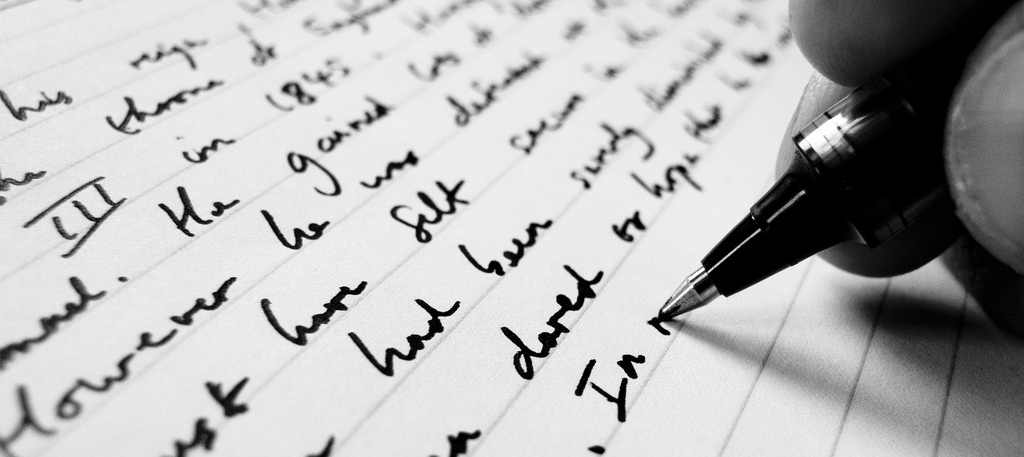“Music,” Herbie Hancock says, “is truly the universal language.” Music captures not just the sounds and rhythms of life, but also the emotions and ideas that create order. Music speaks across languages. Wherever you go, people move when the music starts. Music has that amazing capacity to tell a story. Gregorian chants, folk music, symphonies, jazz, rock and roll, and of course opera all tell tales. But, at the same time, they all rise above the story.
The same applies to style in writing.
 Above all else, writing needs to communicate—to tell stories, convey ideas, paint pictures, and evoke emotions. The “classic style” of writing—whose exemplars are William Strunk and E.B. White, Joseph Williams, and William Zinsser—seeks to clear away clutter, sharpen ideas and images, and show the reader something—clearly. And what an amazing world this would be if we could all learn to master the skills of clarity!
Above all else, writing needs to communicate—to tell stories, convey ideas, paint pictures, and evoke emotions. The “classic style” of writing—whose exemplars are William Strunk and E.B. White, Joseph Williams, and William Zinsser—seeks to clear away clutter, sharpen ideas and images, and show the reader something—clearly. And what an amazing world this would be if we could all learn to master the skills of clarity!
But there’s more to writing than that. There’s this thing called style. Style is everything that matters beyond clarity. Style is the part of good writing exists for reasons beyond utility. We need clear writing to communicate, as Hemingway said, “the good and the bad, the ecstasy, the remorse and sorrow, the people and the places and how the weather was.”
Hemingway, in fact, explicitly argued against attaching all kinds of symbolism and higher meanings to works. “The sea is the sea,” he said. “The old man is an old man. The boy is a boy and the fish is a fish. The shark are all sharks no better and no worse.”
And yet …
When you get the writing right—when you find the exact right words, which show readers things they would be able to see otherwise—some kind of artistic magic happens. When you find the rhythm and cadence, sounds and smells and sights and touches, the words that send readers’ imaginations into more profound explorations—then writing does more than simply communicate. It takes readers off into that same place that music does.
So pay attention to all the things that go beyond simple communication—rhythm, beats, sounds, shapes, textures, and images. Consider, for the sake of illustration, these familiar expressions:
Don’t tread on me.
Four score and seven years ago.
Lock and load.
Make the world safe for democracy.
You have nothing to fear but fear itself.
Take me out to the ballgame.
I see friends shaking hands, saying how do you do; they’re really saying I love you.
Peace in our time.
Tax and spend.
Go back to Mississippi.
Tear down this wall.
Coke is it.
Just do it.
We are the ones we have been waiting for.
Read them aloud. Follow the cadence. Get a sense of meaning from the sound. Some make a simple declaration (“Just do it”), others offer a reverie (“Four score and…”), others depict a scene (“I see friends shaking hands…”), and others make an argument (“You have nothing to fear…”). But they all hop along like brook water over stones.
Ancient literature, like Homer’s Odyssey and Iliad, took the form of verse. In an oral tradition, without written records, storytellers used a distinctive meter, melody, wordplay, and imagery to remember the lines of the epic tales.
To test your pacing—too fast? too slow? too wordy? too simple?—read your drafts aloud. If the words sound good moving from the left to the right side of the page, you’re probably on the right track. When you hear awkward phrases and confusing transitions, figure out what blocks the flow.
For a change of pace, read as fast as you can. Concentrate hard and spit the words out, one after another, without pausing. Speed editing often reveals writing better than normal reading. When you read fast, problem passages trip you up. And you engage your whole brain, awakening yourself to the flow and meaning of the words.
Style—that ineffable pizzazz that engages the reader—comes only with mastery of the basics. When you develop all the skills of writing, practice them, and listen to the sounds of your writing, you will find your style.
So how do you find your own style?
Back when he was a struggling printer’s apprentice, Benjamin Franklin decided he wanted to be a writer. He wanted to write like Joseph Addison and Richard Steele, the eighteenth-century essayists whose work appeared in the British Spectator. And so he imitated them. He put his words in their sentence structures. He imitated their alternation of short and long sentences, mimicked their humor, and mirrored their world-wise perspective.
By imitating Addison and Steele, Franklin found his own style. Addison and Steele gave him a template, so that he could master enough skills to find himself.
Go ahead and imitate your favorite writers. If you do it faithfully, you’ll find yourself consciously shaping your sentences and paragraphs. You will master useful techniques, and then burn them into your brain. That’s when your own style will emerge.
How do you know when you’ve got style—your own style, not just affectations and imitations of others? Again, let’s turn to Hemingway for an answer. When he was rejecting the idea of symbolism, he wasn’t rejecting the idea of some greater meaning and insight. In fact, he offered a simple test for style that goes beyond literal meaning.
“What goes beyond is what you see when you know,” Hemingway said.
When you get the writing right—when you develop your own powerful style—you give the reader an opportunity to see something beyond the immediate subject. You offer words that somehow take readers to their deepest levels of understanding.



